An anchor attaches a commercial door frame to the surrounding structure. There are many types – here are some of the most common! Special thanks to Ben Hallett of LaForce’s Hollow Metal team, and Kristi Dietz, LaForce’s Engineering Training Manager, for providing technical expertise. For help on terminology, reference our Door, Frame, and Hardware Glossary.
Compression Anchors
Compression anchors are supplied on knock-down (not welded), afterset frames. This frame type is typically used on stud walls that have already been drywalled. These anchors are attached to the frame jambs before the frame is shipped and ensure a tight fit of the three frame pieces – head, strike jamb, and hinge jamb – when the frame is installed.

Masonry Anchors
These are used on frames mounted to a masonry block wall. They are attached to the frame in-field so that they can be positioned between the concrete masonry unit (CMU) blocks as the wall is constructed. The picture on the far left is considered a “masonry wire anchor” and the picture to the right of it is a “masonry “T” anchor.”

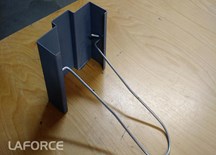
Steel Stud Anchors (SSA)
These are used on frames mounted to steel stud walls. The frame is secured to the stud before the wall is finished with drywall. This anchor type can be supplied loose (then snapped into the frame throat in-field) or it can be welded to the back of the frame throat. The anchor pictured is a snap-in sample, which can also be used as reinforcement for an EWA anchor.
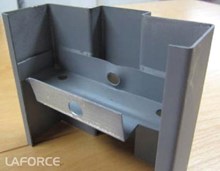
Wood Stud Anchors (WSA)
These are almost the same as the steel stud anchor with one primary difference: The anchor includes straps, which are used to wrap and secure it to the wood stud during installation. The anchor pictured is a snap-in sample, which can also be used as reinforcement for an EWA anchor.
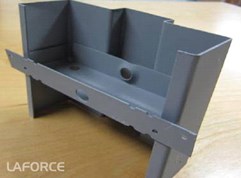
Existing Wall Anchors (EWA)
Existing wall anchors are used on frames mounted to existing walls. Frames are pierced and “dimpled” (countersunk), typically in the soffit, so that a fastener can be inserted to secure the frame to the wall. (Fasteners vary by wall type; typically, expansion bolts, tapcons, machine bolts, and wood screws are used.) Inside the frame throat is a metal piece, which acts as reinforcement and guide (for the fastener) as the frame is secured in place. This metal piece can be supplied loose (snap-in type) or welded to the back of the frame throat. There are many types of EWA’s. This picture shows a snap-in type that is sometimes called a “butterfly clip.”
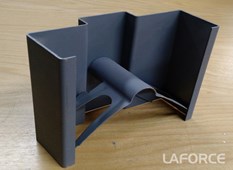


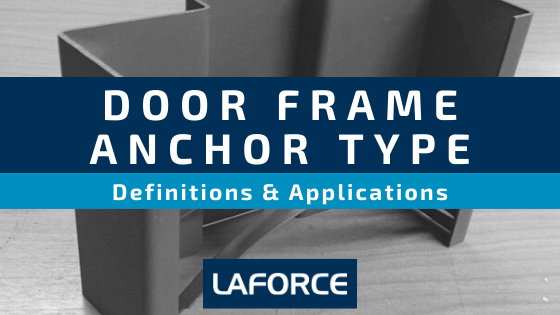
Follow Us